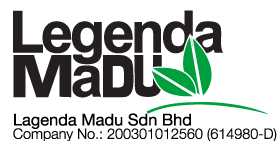Initial Findings For The Effective Treatment of Dragon Fruit (Pitaya) Diseases
- Published in
- Category: Specialist Articles
- Hits: 12412
- Print , Email
by Ognyan Kostov and Ngan Teng Ye
Note: The excerpted information below was introduced at the Conference for Soil and Crop Quality Strategy 2006 in Kuantan, Malaysia
Increasingly, there is an emerging trend in a variety of Dragon Fruit Rotting Diseases found on dragon fruit farms in Malaysia. The symptoms include cessation of blossoming activities and vegetative growth halting. The diseases have been found to be caused by pathogenic microorganisms such as Fusarium oxysporum, Erwinia sp. and Aspergillus sp.
It has been hypothesized that these diseases have emerged due to the lack of healthy soil conditions caused by insufficient organic matter in the soil structure. Poor soil conditions have been caused by low soil pH, overuse of chemical fertilizers rich in nitrogen, and the use of low quality (unstable) composts made from animal by-products such as chicken dung that have not been properly sanitized and matured.
Treatment Promising ways to treat and recover plant health and yield, and prevent further attacks, include treating the plant and soil with carefully selected microorganisms that compete with the pathogenic microbes for nutrients and create antagonistic bio-chemical compounds.
This was done through a combination of applications:
1) By applying specially inoculated composts to the soil to balance the nutrient requirements of the dragon fruit plant
2) Treating the plant with a liquid microbial control agent which has a wide range of antagonistic effects against the pathogens
Results Recovery in one month with increased flowering compared to pre-treated plants
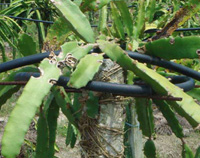 |
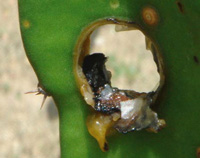 |
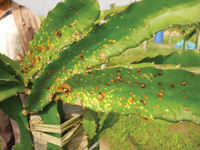 |
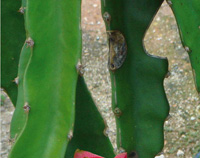 |
| 1) Pitaya plants under siege | 2) Close-up of diseased plant - rotting | 3) Close-up of diseased plant | 4) Plant recovers |
5 weeks since treatment began
